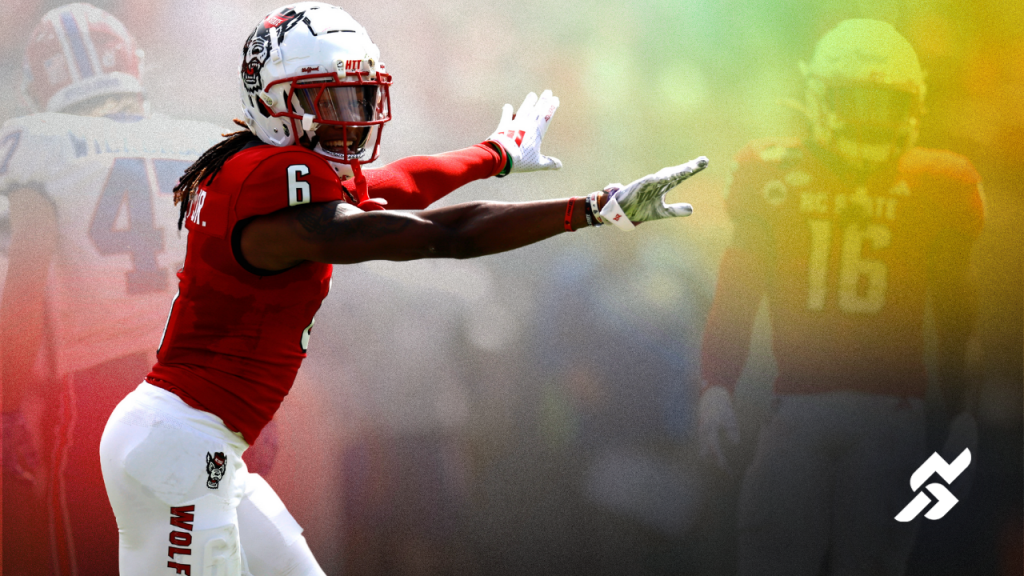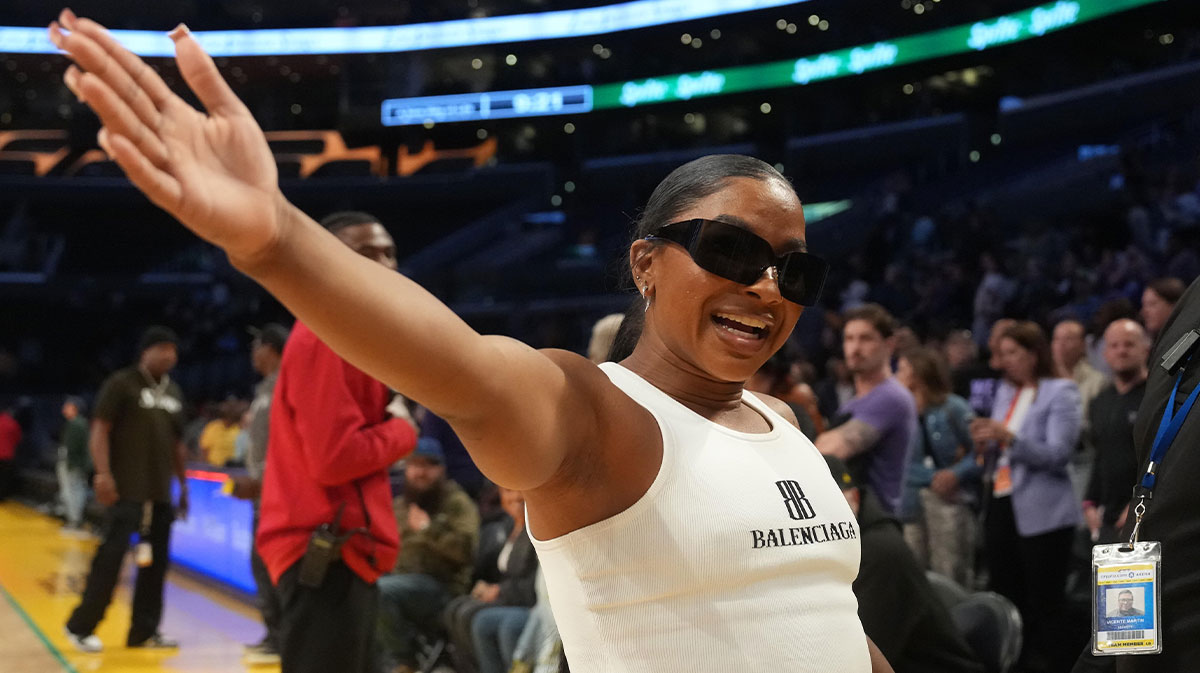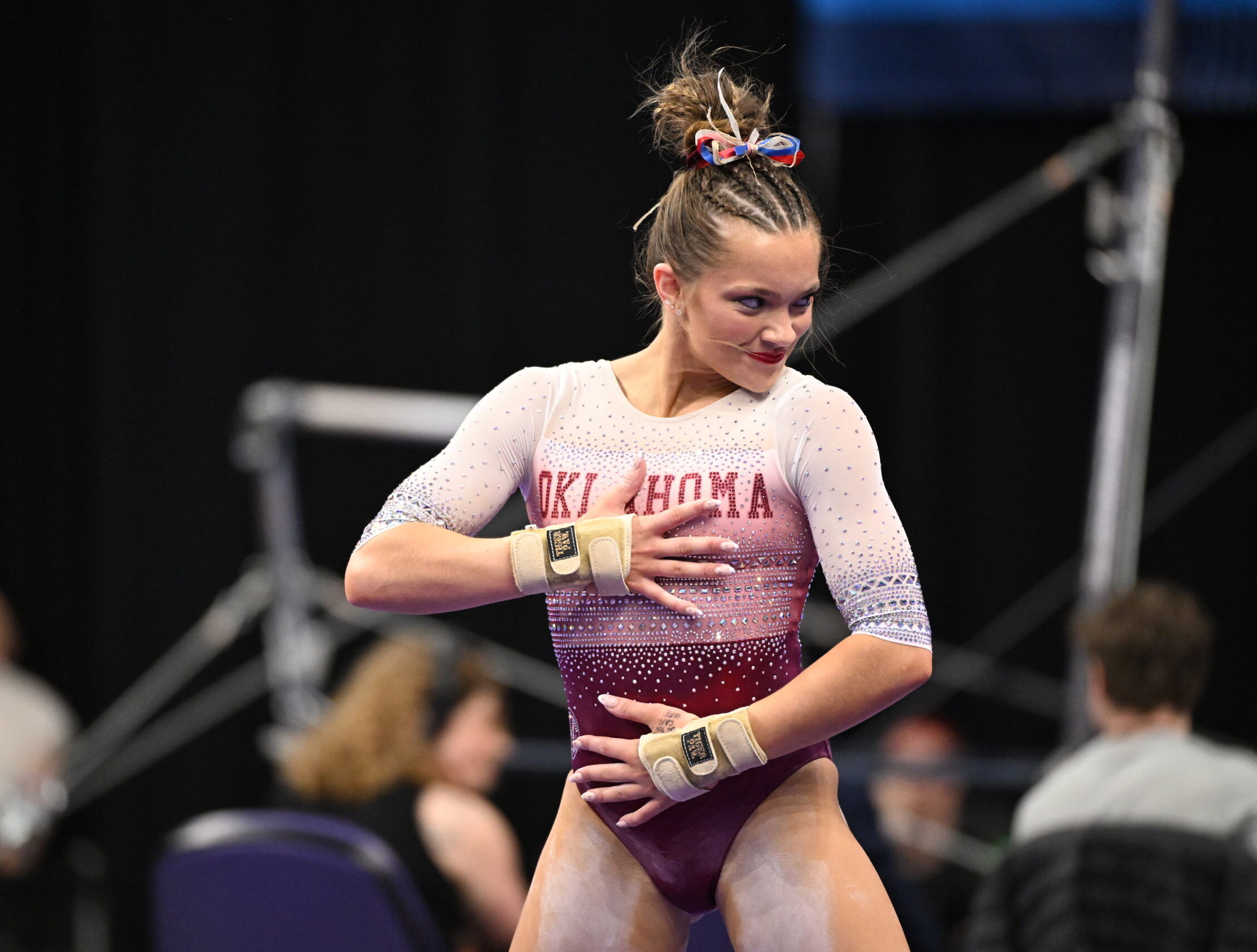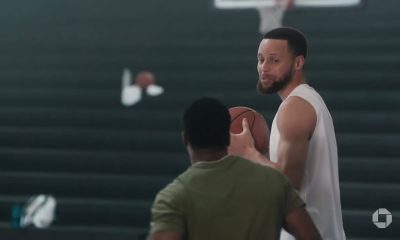College Sports
Michigan Athletics Announces New Multi
DETROIT, Mich. — University of Michigan Athletics and Learfield’s Michigan Sports Properties in partnership with Beasley Media Group Detroit, is proud to announce today (Wednesday, April 16) a multi-year broadcast agreement that will make 94.7 WCSX-FM the new flagship radio home for the Michigan Wolverines. The partnership will officially kick off with the 2025 Michigan […]



DETROIT, Mich. — University of Michigan Athletics and Learfield’s Michigan Sports Properties in partnership with Beasley Media Group Detroit, is proud to announce today (Wednesday, April 16) a multi-year broadcast agreement that will make 94.7 WCSX-FM the new flagship radio home for the Michigan Wolverines. The partnership will officially kick off with the 2025 Michigan football season.
As part of the agreement, WCSX-FM will broadcast all football, men’s basketball, and ice hockey games, along with coaches’ shows and exclusive ancillary programming. In addition, 105.1 The Bounce (WMGC-FM) will carry select women’s basketball regular-season games as well as postseason matchups, ensuring that fans don’t miss a moment of the action from some of the university’s most dynamic teams.
The multi-platform agreement includes not only game coverage but also a robust digital and promotional presence across Beasley Media Detroit’s omni-channel platforms (On-Air, On-Line, and On-Site). Fans can look forward to weekly Athletics features, exclusive interviews, and digital content that goes beyond traditional play-by-play—bringing the U of M spirit to listeners every day of the week.
“When it comes to college athletics, no brand is bigger and no fan base is more passionate than the University of Michigan,” said Kevin Rich, Vice President of Operations, Beasley Media Group. “We’re thrilled to partner with the University and Michigan Sports Properties to bring top-tier programming and play-by-play coverage to fans across Southeast Michigan. Go Blue!”
“Michigan Athletics has a long and storied tradition, just like WCSX, a heritage station with deep roots across Southeastern Michigan,” said Patti Taylor, Vice President and Market Manager of Beasley Media Group Detroit. “We’re proud to unite these two legacies and continue delivering Michigan Athletics to passionate fans across the region on our platforms.”
“We’re thrilled to begin this new partnership with Beasley Media Group. For the first time in the Detroit market, Michigan fans can hear live coverage of all football, basketball and hockey on a regional FM signal with 94.7 WCSX,” said Jennifer Cadicamo, Vice President and General Manager of Michigan Sports Properties. “We are also pleased to announce that Jon Jansen and Doug Karsch will remain as the voices of our football radio broadcasts”.
Michigan Sports Properties, the locally based team of Learfield — the media and technology company powering college sports — is the exclusive multimedia rights holder for Michigan Athletics and oversees the relationship with Beasley Media Group on behalf of the Wolverines.
“Partnering with Beasley Media Group as our new flagship radio station marks an exciting chapter for our athletics department,” said Doug Gnodtke, Michigan’s Executive Senior Associate Athletic Director and Chief of Staff. “This collaboration will not only amplify the voices of our student-athletes and coaches, but it also strengthens our connection with fans and alumni in metro Detroit and across the state of Michigan. We appreciate Learfield partnering with Beasley to bring the energy and spirit of our games to a broader audience, celebrating the dedication and hard work of our teams on and off the field, court and ice.”
About Beasley Media Group:
Beasley Media Group (BMG), LLC, a subsidiary of Beasley Broadcast Group, Inc., is a multiplatform media company providing advertising and digital marketing solutions across the United States. BMG owns 57 radio properties located in 10 large and medium markets across the country, as well as offers capabilities in audio technology, podcasting, ecommerce and events. Beasley Media Group reaches more than 20 million consumers on a weekly basis. For more information, please visit www.bbgi.com.
About Learfield:
Learfield is the leading media and technology company powering college athletics. Through its digital and physical platforms, Learfield owns and leverages a deep data set and relationships in the industry to drive revenue, growth, brand awareness, and fan engagement for brands, sports, and entertainment properties. With ties to over 1,200 collegiate institutions and over 12,000 local and national brand partners, Learfield’s presence in college sports and live events delivers influence and maximizes reach to target audiences. With solutions for a 365-day, 24/7 fan experience, Learfield enables schools and brands to connect with fans through licensed merchandise, game ticketing, donor identification for athletic programs, exclusive custom content, innovative marketing initiatives, NIL solutions, and advanced digital platforms. Since 2008, it has served as title sponsor for the acclaimed Learfield Directors’ Cup, supporting athletic departments across all divisions.
About University of Michigan Athletics:
Intercollegiate Athletics at the University of Michigan began in 1866 with the establishment of baseball as the school’s first varsity team. Over 150 years later, the U-M athletic department proudly supports 29 varsity programs and consistently ranks among the nation’s premier collegiate athletic programs, excelling both in competition and in the classroom. Michigan has secured 58 national team championships and 330 individual national titles. Within the Big Ten Conference, Michigan stands out as the leading athletic program, amassing 420 conference team titles. Academically, U-M takes great pride in its student-athletes, with over 131 individuals earning a total of 178 Academic All-America honors.
College Sports
NC State Football’s Corey Coley Jr. Denied Bid to Play Fifth Season
A federal judge has denied NC State cornerback Corey Coley Jr.’s attempt to play a fifth season of Division I , reasoning that NCAA eligibility rules aren’t subject to antitrust scrutiny and that even if antitrust law applied Coley’s bid would be nixed. In an order issued last Friday, U.S. District Judge James C. Dever […]

A federal judge has denied NC State cornerback Corey Coley Jr.’s attempt to play a fifth season of Division I , reasoning that NCAA eligibility rules aren’t subject to antitrust scrutiny and that even if antitrust law applied Coley’s bid would be nixed.
In an order issued last Friday, U.S. District Judge James C. Dever III sided with the NCAA and rejected Coley’s motion for a preliminary injunction.
Coley is part of a growing group of college athletes who seek to extend their NCAA eligibility on account of NIL opportunities. This group has experienced mixed results in different courts across the country. As Sportico explained, the newly approved House settlement will make staying in school even more enticing given that some athletes will receive shares of revenue.
Coley, who played at Trinity Christian Academy in Jacksonville, Fla., began his college career in 2021 by enrolling at the University of Maryland. Coley expected to redshirt in his freshman year, which would have made him eligible to play through the 2025 season. However, injuries in the Terrapins’ secondary elevated Coley on the depth chart and into the lineup.
Coley played three years at Maryland, during which he battled a knee injury. In 2023, Coley learned of the death of his uncle, who had played a “vital role” in his life. According to Coley’s complaint, the death had a profound and devastating impact on the young player. “Being far away from home made Coley’s grief from this death almost unbearable,” the complaint asserted, “and left him feeling isolated, helpless, distracted and unmotivated, which again, affected his performance both on and off the field.”
Coley transferred to NC State for his senior year. However, the season didn’t go as planned. Coley said he “endured mental health struggles” and suffered a season-ending injury in his sixth game of the season.
Coley and NC State applied to the NCAA for a hardship waiver, which if granted would have made Coley eligible this fall. The application cited Coley’s “collective struggles, both mentally and physically, through his collegiate career.” In February, the NCAA denied the application. Coley, who expects to earn his degree from NC State by the end of 2025, then sued the NCAA.
Like other athletes, Coley argues that the NCAA restricting eligibility to four seasons in five years violates antitrust law. He asserts that by denying his eligibility, the NCAA will deprive him of “substantial NIL compensation.”
Coley’s case is based in part on an expansive interpretation of the U.S. Supreme Court’s decision in NCAA v. Alston (2021). Although Alston is often linked by media to name, image and likeness, which derives from the right of publicity, NIL didn’t appear once in the ruling. That’s because the case concerned an altogether different topic: the compatibility of NCAA rules regarding education-related expenses with antitrust law. Alston clarified that NCAA compensation rules are subject to ordinary—and not deferential—scrutiny under antitrust law.
Coley, and others, argue that Alston makes NCAA eligibility rules subject to ordinary antitrust scrutiny—and that eligibility rules illegally restrain the labor market of D-I college football players. That interpretation of Alston has helped Vanderbilt quarterback Diego Pavia and Rutgers safety Jett Elad thus far succeed in their cases against the NCAA to keep playing. But judges reviewing other eligibility cases have rejected this interpretation as construing Alston beyond its actual words.
Dever endorsed a more literal interpretation of Alston. He wrote that Alston tackled NCAA rules regarding education-related benefits, but that those rules reflect only a “narrow subset” of compensation rules.
The judge added that the relationship between NCAA eligibility and the ability to sign NIL deals does not convert eligibility rules into compensation rules. He cited cases holding for the proposition that eligibility rules aren’t subject to antitrust scrutiny, which governs commercial dealings. Eligibility rules fundamentally concern which college students can play a sport in accordance with academic and other university objectives.
Dever also suggested that if NCAA eligibility rules violated antitrust law because they restrain NIL opportunities, that would “compel” a “nonsensical outcome.” The judge reasoned that there are numerous NCAA rules that “could potentially affect a player’s ability to earn NIL compensation” and that could be deemed violative of antitrust law under Coley’s test. Those rules concern such topics subject as:
- Minimum academic requirements.
- Prohibition of the use of illegal drugs.
- Prohibition of sports wagering.
- Disciplinary proceedings that could result in suspension or expulsion.
- Ethical standards.
Dever also criticized the evidence presented by Coley regarding whether the eligibility rules have a sufficiently anticompetitive effect on the labor market of D-I football players to run afoul of antitrust law. The evidence presented concerned Coley’s NIL earning potential but said “nothing about a substantial anticompetitive effect on the labor market as a whole.” The judge added that “anecdotal experiences” of college football players do not rise to the level of evidence needed.
The denial of a preliminary injunction does not end the case. However, given that litigation can take months or longer and given that Coley wants to play this fall, Dever’s ruling deals a major blow to Coley’s chances to be eligible for the 2025 season. The cornerback can appeal Dever’s order to the U.S. Court of Appeals for the Fourth Circuit.
In a written statement, an NCAA spokesperson said the NCAA “appreciates that the court’s ruling will allow the litigation to proceed its normal course, and we are confident that the underlying rationale for the rules and benefits to current and future student-athletes will be evident.” The spokesperson also said that, in the NCAA’s view, “the rules for years of eligibility, along with other rules, are designed to help ensure competition is safe and fair, aligning collegiate academic and athletic careers to provide high-level opportunities and benefits to current and upcoming student-athletes.”
College Sports
2-time Olympian Jordan Chiles shows up courtside for Valkyries-Sparks OT thriller
The post 2-time Olympian Jordan Chiles shows up courtside for Valkyries-Sparks OT thriller appeared first on ClutchPoints. The energy at Crypto.com Arena was already electric on Monday night, but the crowd buzzed louder when two-time Olympic gold medalist Jordan Chiles took her seat courtside. The WNBA delivered one of its most thrilling games of the […]

The post 2-time Olympian Jordan Chiles shows up courtside for Valkyries-Sparks OT thriller appeared first on ClutchPoints.
The energy at Crypto.com Arena was already electric on Monday night, but the crowd buzzed louder when two-time Olympic gold medalist Jordan Chiles took her seat courtside. The WNBA delivered one of its most thrilling games of the season, and Chiles was there for every moment.
The Golden State Valkyries pulled off a dramatic 89-81 overtime win over the Los Angeles Sparks. Janelle Salaun led the Valkyries with 21 points and 8 rebounds, while Kayla Thornton drilled a clutch three-pointer with 38 seconds left in the extra period. The Sparks had their own firepower with Kelsey Plum dropping 24 points, but it was not enough to hold off Golden State’s late surge.
Advertisement
This game marked a critical point in the season series. The Valkyries now lead 2-1 over the Sparks, continuing their strong form after victories on opening night and today. With both teams battling for playoff positioning, the intensity on the floor was matched by the energy in the stands.
Sitting just a few feet from the court, Jordan Chiles soaked it all in. Known for her electric floor routines and steady presence on the U.S. gymnastics team, Chiles brought her champion spirit into the basketball arena.
She smiled, waved at fans, and stood up during key plays, clearly locked into the action. Her appearance sent a powerful message about the rise of women’s sports and the respect athletes across disciplines have for one another.
Chiles is no stranger to pressure or big stages. She helped Team USA win silver in Tokyo and followed it up with a gold medal performance in Paris in the team competition. Outside of Olympic glory, she has competed at the highest levels in NCAA gymnastics for UCLA, becoming a fan favorite and a role model for young athletes across the country.
Advertisement
Her presence at the game was more than a photo opportunity, it was a show of support that spoke volumes. As women’s basketball continues to grow in viewership and influence, the support of figures like Chiles helps push it further into the spotlight. It reminds fans and fellow athletes that excellence, commitment, and excitement exist in every corner of sport.
The game itself was a showcase of that excellence. It was fast, physical, emotional, and unpredictable. Every possession mattered. Every shot had weight. Jordan Chiles was right there for it all, her presence amplifying the moment and reminding everyone that greatness always recognizes greatness.
Related: Week 3 WNBA power rankings: Lynx, Liberty soar as others struggle to launch
Related: Top contenders in WNBA Commissioner’s Cup race
College Sports
Inside Gymnastics Magazine | “It was always Oklahoma for me.” OU’s Elle Mueller Reflects and Looks Forward
Oklahoma’s Elle Mueller put on a SHOW every time she stepped on the floor during her freshman debut. Her musical interpretation, storytelling, larger-than-life choreography, and performance quality were stellar—creative, artistic, passionate—and it seems she’s got the college game very much in the palm of her hand. The choreography and the music, “You Don’t Own Me” […]

Oklahoma’s Elle Mueller put on a SHOW every time she stepped on the floor during her freshman debut. Her musical interpretation, storytelling, larger-than-life choreography, and performance quality were stellar—creative, artistic, passionate—and it seems she’s got the college game very much in the palm of her hand.
The choreography and the music, “You Don’t Own Me” performed by Harley Quinn, suited Mueller perfectly. And together with OU head coach KJ Kindler, who gave her the confidence to embrace every note of music and perform, Mueller, like many of us, isn’t quite ready to let this routine go.
“I guess I need to start looking for new music!” she told us.
The routine was the one she’s waited for her entire career so far to perform, she said. So it’s totally understandable that while she’s excited to top it, she’ll always remember it as very special, beginning with the first moments she worked with Kindler to create it and discovering a different side of herself as an artist.
“Going back to Twin City Twisters, we had a dance coach that we would work with two, three times a week, and she was super chill. She would just bring out different dances in us, have us work on our facial expressions,” Mueller said. “I think that opened me up to the artistry.
“You’ve always seen KJ’s floor routines, and you’re like, ‘Oh, my gosh, I want one of my own!’ Just seeing her embody that character and who she wanted me to be allowed me to perform it. I embodied Harley Quinn because that’s where my music is from. It’s a routine style I’ve always wanted to do, so I took the chance and ran with it.”
Having her teammates just feet away and living every step of the routine with her week after week brought Mueller joy and confidence. Along the way, she grew from rookie to veteran overnight.
“It was incredible,” Mueller said of her teammates’ support during her routine and throughout the season. “It really allowed me to get into my routine more and just do it for them because those are the people that I’m doing it for. You no longer do it for yourself; you do it for your team. That just gave me a little reminder of just how much support I really have.”
Described by Aly Raisman on air as “breathtaking,” our photographer, Lloyd Smith, captured Mueller’s routine during Four On the Floor, where she once again captivated the audience—her teammates included.
See below for more of our chat with Mueller following the NCAA Championships in April, where OU took its seventh national title.
College Sports
Alex Cooper alleges she was sexually harassed at BU
Alex Cooper alleges she was sexually harassed at BU Close Modal Boston.com Newsletter Signup Boston.com Logo Stay up to date with everything Boston. Receive the latest news and breaking updates, straight from our newsroom to your inbox. No thanks – Closes Modal window 0


College Sports
Bruins forward picks Middlebury College
Jun. 9—Austin Bruins forward Luc Malkhassian has committed to Middlebury College to further his academic and playing career. Malkhassian dominated the ice with the Bruins this past season. The Toronto native began the season with an impressive nine points (two goals and seven assists) in the first two games of the year, notching a point […]

Jun. 9—Austin Bruins forward Luc Malkhassian has committed to Middlebury College to further his academic and playing career.
Malkhassian dominated the ice with the Bruins this past season. The Toronto native began the season with an impressive nine points (two goals and seven assists) in the first two games of the year, notching a point in eight of his first ten games for a total of 15. “It means a lot to me to take this next step in my career and play at the collegiate level,” Malkhassian said. “I’m very excited for this next step in my journey.”
Advertisement
He netted a total of 27 goals during the year, good for second on the Bruins and tied for 12th among NAHL skaters. Malkhassian consistently performed at a high level while remaining healthy all year long. The forward appeared in all 59 regular season games, the only Bruin to play in every single game this year.
“We are excited for Luc and his family,” Bruins head coach Steve Howard said. “He came to Austin for the exposure to colleges and performed at a high level all season long. We look forward to following his career as he joins a great Middlebury program.” Malkhassian, who was named to the NAHL All-Central Division team, credits his time in Austin for preparing him to take this next step.
“Austin prepared me to play a man’s game which is college hockey. It matured me and developed me into the player I am today,” Malkhassian said.
The first year Bruin made single season history, not once but twice throughout the season. On March 22, a two goal first period against Minot catapulted the forward to 71 points in a single season, passing the previous record set a season prior by Austin Salani. Malkhassian was the second Bruin to reach the mark as longtime teammate Alex Laurenza broke the record the previous week.
Advertisement
However, Luc wasn’t done with just one record. In the second last game of the year, Malkhassian posted his 50th assist, breaking a 12-year single season record held previously by Brandon Wahlin. His 78 points to end the year placed him second in the Bruins record books and second overall in the NAHL this year.
The Middlebury Panthers hockey team is a Division III program that is a member of the New England Small College Athletic Conference (NESCAC). The Panthers hold the Division III record for most national championships with eight.
The program finished the 2024-25 season with an overall record of 13-12-1 while posting an 8-9-1 conference record, good for seventh in the NESCAC.
“As someone who values academics, it was an offer I couldn’t pass up,” Malkhassian commented on why he chose Middlebury. “The school itself along with the direction the hockey program is heading felt like the perfect spot for me.”
Malkhassian becomes the fourth Bruin to make a commitment this season.
College Sports
Track Is America’s Opportunity Sport. Colleges Need to Save It
Today’s guest columnist is Russell Dinkins, executive director of the Tracksmith Foundation. Olympic sports in college are in danger. With Name, Image and Likeness (NIL) allowing college athletes to receive endorsement deals and pay via collectives, and a just-approved antitrust settlement that will result in colleges having to pay athletes directly, colleges are already making […]

Today’s guest columnist is Russell Dinkins, executive director of the Tracksmith Foundation.
Olympic sports in college are in danger. With Name, Image and Likeness (NIL) allowing college athletes to receive endorsement deals and pay via collectives, and a just-approved antitrust settlement that will result in colleges having to pay athletes directly, colleges are already making decisions about which sports to keep and which sports may need to be cut.
And while the loss of any Olympic sport is concerning, the loss of track and field programs will be devastating, not only for the development of elite-level athletes, but also because of the sport’s accessibility and racial and socio-economic diversity. In the wake of the House settlement, and with the NCAA Division I track and field championships taking place this week in Oregon, now is the time to discuss these issues.
Track and field is America’s opportunity sport. It is the nation’s largest high school sport when you include both male and female participation, and it is the cheapest youth sport by far, meaning it’s the most accessible and affordable of all youth sports offerings.
It is also one of the few sports where teenage athletes can be recruited by colleges by simply participating on their high school’s team.
Today, youth sports are dominated by expensive club or travel teams that compete outside of local scholastic programs. For many youth sports, an athlete essentially has to be on one of these club teams to be recruited.
However, track and field athletes can get the attention of college coaches just from their local high school meets, because performances are measurable and objective. In fact, nearly all high-school track results are uploaded to a national database, democratizing the recruiting process. The likelihood that a low-income kid from small-town North Dakota, urban Baltimore or rural Texas can earn an opportunity to go to college via sport is far greater in track than in most other college sports.
The NCAA and colleges within their system have enjoyed the perception that the NCAA provides educational pathways to college for those who may otherwise not have that opportunity. For the most part, this perception is the result of clever marketing. However, there’s one sport that actually does a great job of keeping that school door open—track and field.
Collegiate track and field is the largest sport in the NCAA by participation. It is also the NCAA’s most diverse Olympic sport.
Nearly half of the NCAA’s Olympic sports athletes of color participate in track and field and cross country. No other Olympic sport in the NCAA comes close. And while nearly 70% of Olympic sports athletes in the NCAA are white, track and field stands apart, as over 40% of its athletes are athletes of color.
In addition, track and field provides great opportunities for both men and women. As the largest sport in high school for girls and the largest by participation for women in the NCAA, track and field provides the most opportunities for these athletes to not only experience the benefits of sport but to utilize it as a pathway to college.
For boys and young men, the sport’s role in providing a pathway to college is also significant in light of national trends that see significantly fewer young men attending college than women. Track represents one of the few remaining mechanisms that effectively and efficiently bring young men into college classrooms nationwide. And while it is an objective good that more women are going to college, we cannot, as a society, allow young men to fall by the wayside.
The NCAA and universities writ large should be invested in ensuring that sport remains a viable pathway to an education, especially for under-resourced populations. Allowing college track to be diminished or eliminated works against that goal. Therefore, the NCAA ought to provide college track with special consideration or protected status due to the sport’s unique societal benefits.
The sport, however, can also make itself more valuable in the modern collegiate marketplace by enhancing its financial and cultural value.
Olympic sports such as women’s gymnastics, volleyball and softball have shown that producing a compelling television product and in-person experience can create value. Adjusting college track meets that take place within a TV-friendly two-hour window, with clear scoring that shows a clear team winner will be a tremendous step in the right direction. Someone should be able to see a quad meet between UCLA, USC, Oregon and Washington on a bar TV and clearly tell who’s ahead and who the winner is at the end of the meet.
Most NCAA football and basketball teams, outside of the biggest Power Four teams, don’t make money but provide cultural value to their institutions and communities. Many colleges, for instance, organize their homecoming and alumni weekends around a football game. Moreover, with football and basketball being fall and winter sports respectively, there’s a potential economic void in the spring that track could capitalize on. Here’s a thought: Several big-time football schools have abandoned open spring football games, which used to be a sizable event attracting fans and alums to campus, to protect players from being scouted and poached in the transfer portal. Why not build an event around a major track meet instead?
Collegiate track should elevate the cultural value of the sport by educating the public on why it is of social benefit. If there’s a broad understanding of how and why the sport is truly “the opportunity sport,” the sport can display its worth and be considered as valuable as the unprofitable football and basketball teams.
Sport is often thought of as the great equalizer. Unfortunately, that ideal does not reflect how most sports operate in modern-day America. A truly accessible, merit-based, high school-to-college pipeline does not exist for a great many of the sports we see in the NCAA. Track, though, actually does a great job of providing such a route to an education. It would be a grave disservice to allow these opportunities to be taken away via sports cuts by college administrators who are looking at bottom lines and not the lives impacted by their decisions. The societal cost is too great to allow collegiate track and field, America’s opportunity sport, to wither away.
Russell Dinkins is a national track and field advocate and executive director of the Tracksmith Foundation. An NCAA champion and six-time Ivy League champion while at Princeton, Dinkins’ advocacy has helped save four Division I track and field programs by leveraging media and historic applications of Title IX and other legal strategies to see the reinstatement of over 200 athletic opportunities.
-

 Professional Sports3 weeks ago
Professional Sports3 weeks agoJon Jones answers UFC retirement speculation as fans accuse champion of 'holding the belt …
-

 Motorsports3 weeks ago
Motorsports3 weeks agoWhy IHOP Rode With Dale Earnhardt Jr. In Amazon NASCAR Debut
-

 NIL2 weeks ago
NIL2 weeks ago2025 NCAA Softball Tournament Bracket: Women’s College World Series bracket, schedule set
-

 High School Sports3 weeks ago
High School Sports3 weeks agoToday in the MHSAA
-

 Health5 days ago
Health5 days agoOregon track star wages legal battle against trans athlete policy after medal ceremony protest
-

 College Sports1 week ago
College Sports1 week agoIU basketball recruiting
-

 Professional Sports5 days ago
Professional Sports5 days ago'I asked Anderson privately'… UFC legend retells secret sparring session between Jon Jones …
-

 Youtube3 weeks ago
Youtube3 weeks agoAnt greets A-Rod & Barry Bonds before Game 3
-

 Rec Sports2 weeks ago
Rec Sports2 weeks agoJ.W. Craft: Investing in Community Through Sports
-

 Professional Sports5 days ago
Professional Sports5 days agoUFC 316 star storms out of Media Day when asked about bitter feud with Rampage Jackson





























































 Stephen A. responds to LeBron’s NBA coverage criticism | First Take
Stephen A. responds to LeBron’s NBA coverage criticism | First Take






